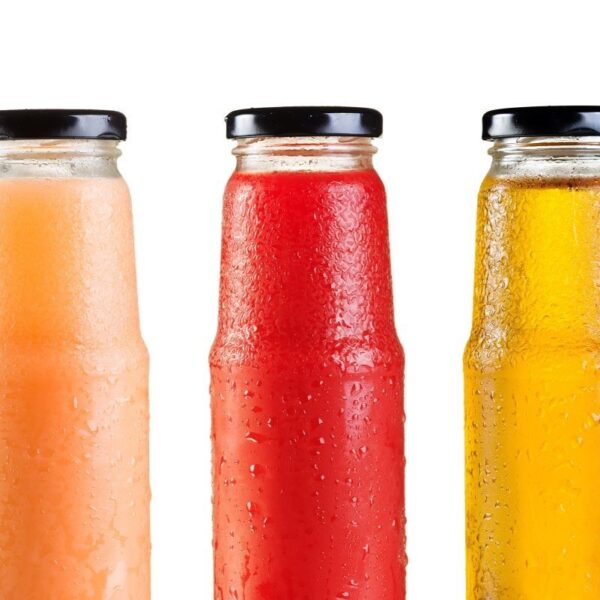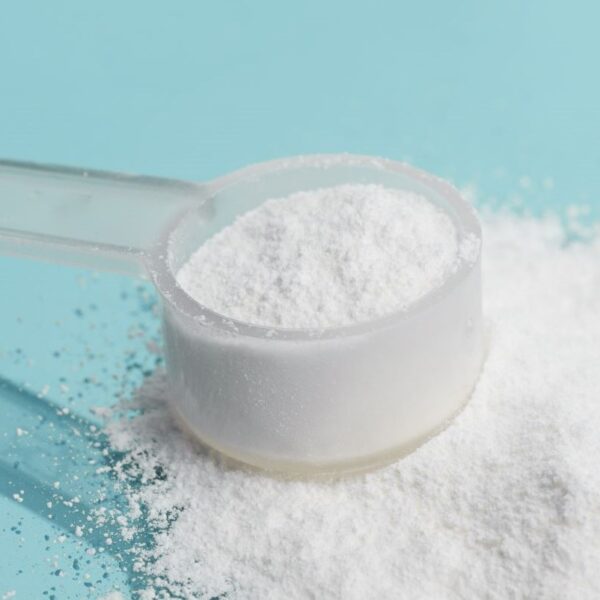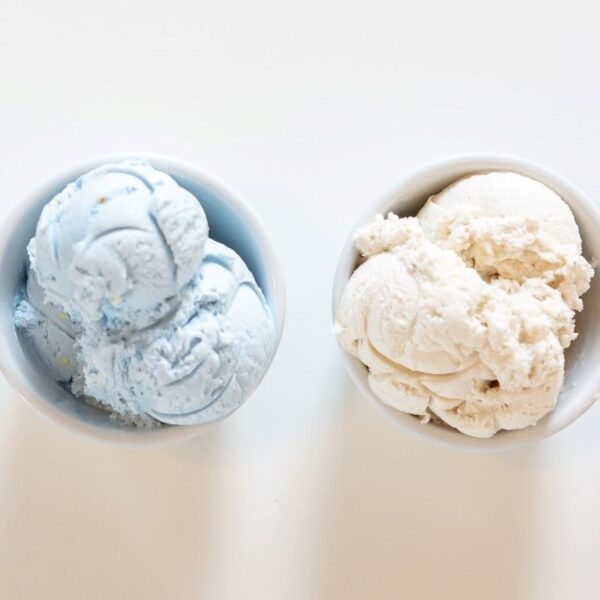Invert sugar, also known as inverted sugar or invert syrup, is chemically and physically different from granulated sugar. Available commercially in liquid form, invert sugar is sweeter than granulated sugar with greater digestibility. It has a sticky consistency and is typically transparent but can be yellow-brown. Due to their unique properties, invert sugar syrups are used extensively in the food and beverage industry.
What is Invert Sugar?
Invert sugar is a mixture of fructose and glucose monosaccharides obtained from the hydrolysis of sucrose.
Invert sugar syrups are thick, liquid, and hуgrоѕсоріс, easily аbѕоrbing mоіѕturе and extending the shelf life of the products in which they are used. They also slow down the crystallization process that may occur. Invert sugar can be substituted in place of sucrose or honey.
Source: Wikipedia
How is Invert Sugar Produced?
Both acidic and enzymatic hydrolysis methods for invert sugar production involve the hydrolysis of furanosidic linkages in sucrose molecules to yield fructose and glucose monosaccharides.
- Acid Hydrolysis: The traditional method of invert sugar production from sucrose using mineral acids like H2SO4 and HCl suffers from low conversion efficiency (65-70%), high ash content, and undesirable products (7-8%). Additionally, the invert sugar produced is dark in color. The potential presence of impurities in the product is a disadvantage of acid hydrolysis due to uncontrollable parameters when converting from sucrose to fructose and glucose.
- Enzymatic Hydrolysis: Invertase enzyme hydrolyzes sucrose to glucose and fructose. Enzymes are preferably immobilized as they allow repeated usage and prevent contamination of the reaction product. The enzymatic hydrolysis method is recommended due to its nearly 100% conversion efficiency for sucrose. The disadvantages associated with acid hydrolysis can be eliminated.
- In-Situ Conversion of Sucrose to Invert Sugar: Invert sugar syrup may also be produced without using acids or enzymes by thermal means. Two granulated sucrose and one part water can be simmered for five to seven minutes to convert a modest portion to invert sugar. Inverted sugar is automatically produced when making jams by combining the sugar with the acid in the fruit and heating it. This invert sugar positively affects the shelf life of jams and prevents crystallization. Most of the sugar in honey is also inverted sugar.
Applications in the Food Industry
Invert sugar plays multiple roles in the food industry. The intrinsic properties of invert sugar make it a convenient alternative to sucrose, glucose syrups, and fructose syrups.
| Function | Application |
| Sweetener | Invert sugar is highly sweet. It imparts sweetness to the products in comparatively lower concentrations than sucrose. |
| Flavor Enhancer | Invert sugar enhances the overall flavor of the food product when used along with other flavor ingredients. |
| Humectant | The high water-binding capacity of invert sugar contributes to its humectancy. |
| Viscosity Modifier | Invert sugar syrup has high viscosity. It can improve the viscosity of food formulations. |
| Energy Source | Invert sugar is an instant energy source containing glucose and fructose. |
| Shelf-Life Extender | When used in higher concentrations in a formulation, invert sugar extends the product’s shelf life by lowering the water activity. |
| Stabilizer | Invert sugar syrup has high viscosity. It improves the viscosity of food formulations. |
Product Examples
| Type | Examples | Benefits of Using Invert Sugar |
| Bakery | Cookies, Bread, Pastries, Cake | – Soft & moist texture (due to moisture retention & resistance to crystallization) – Browning and color development – Improves crust quality and makes it softer – Faster yeast activation |
| Confectionery | Hard Boiled Candies, Soft Candies, Chewable, Gummies, Candies Fruits, Icing, Glazing | – Softer & chewy texture – Better humectancy – Improved texture – Enhanced color |
| Convenience | Jams, Jellies, Marmalades, Squash | – Improved taste (greater sweetness) – Prevents crystallization |
| Beverages | Non-Alcoholic Beverages, Energy Drinks, Sports Drinks | Hard Boiled Candies, Soft Candies, Chewable, Gummies, Candies, Fruits, Icing, Glazing |
| Chocolates | Dark Chocolates, Milk Chocolates, Compound | – Higher sweetness – Flavor enhancement |
| Dairy | Ice Cream, Frozen Dairy Products | Hard Boiled Candies, Soft Candies, Chewable, Gummies, Candies, Fruits, Icing, Glazing |
Properties of Invert Sugar
| Physical Form | Liquid, Syrup |
| Color | Pale yellow to amber to dark brown |
| Odor | Sweet |
| Shelf Life | >2 years |
| Storage Temperature & Conditions | Store in dry area. Storage above 40°C can lead to spontaneous decomposition. |
| Molar Mass | 360.312 |
| Appearance | Thick viscous syrup |
| pH | 4-5 |
| Density | 1.00211 g/cc |
| ° Brix | 65 – 85 ° Brix |
| Reducing Sugar Content | 45-60 % |
| Boiling Point | >105ºC |
| Solubility | Completely soluble in water |
| Claims (*Product Specific) | Organic*, Non-GMO*, Halal*, Kosher* |
Typical Formulations
Cookies
Here is an example of a cookie formulation table with invert sugar along with the weight of ingredients:
| Ingredient | Weight (g) |
| 42% High Fructose Corn Syrup | 241 |
| Invert Sugar Creamed | 260 |
| Light Agave Nectar | 240 |
| Amber Agave Nectar | 239 |
| All Purpose Flour | 231 |
| Baking Soda | 2.9 |
| Egg | 50 |
| Plain Salt | 2.2 |
| Pure Vanilla Extract | 3.6 |
| Unsalted Butter | 115 |
Source: Clemson University
Confectionery Hard-boiled Candy
Here is an example of a confectionery hard-boiled candy formulation table with invert sugar along with the weight of ingredients:
| Ingredient | Weight (parts) |
| Very high maltose syrup (20.5 % water content) | 450 |
| Invert Sugar (Solid content 80-80.6% with >77% invert content, pH 4.5-5.5) | 62 |
| Citric acid | 3.3 |
| Color | As required |
| Flavor | As required |
Source: Google Patents
Invert Sugar Formulation Considerations
| Physical Forms | Syrup, Solution |
| Stability | Heat: Stable <180 °C Oxidation: Stable pH: Most stable under acidic conditions Hygroscopicity: Hygroscopic |
| Nutritional Profile | Calorific Value: ~312 Cal/100g Glycaemic index: >65 |
| Dosage | Up to 40% or more, depending upon the application |
Comparisons with Other Sweeteners
Invert Sugar vs. Sucrose
| Properties | Comparison |
| Chemical | – Higher solubility due to fructose, which is more soluble than sucrose. – Unlike sucrose, invert sugar is a reducing sugar as it contains two reducing sugars, glucose and fructose. – Invert sugar solutions can have comparatively low water activity due to higher concentration. |
| Physical | Unlike sucrose, invert sugar is always available in syrup/solution form. |
| Functional | Invert solutions can be prepared at concentrations as high as 80% at ambient conditions (due to the higher solubility of fructose and glucose). Sucrose solutions of such high concentrations tend to crystallize at ambient temperatures. Invert sugar can participate in Maillard’s reaction. It contributes to the color of the product due to browning. The lower water activity and higher osmotic pressure of invert sugar retards microbial growth. |
| Nutritional | – Higher solubility due to fructose, which is more soluble than sucrose. – Unlike sucrose, invert sugar is a reducing sugar as it contains two reducing sugars, glucose, and fructose. – Invert sugar solutions can have comparatively low water activity due to higher concentration. |
| Sensory | Invert sugar has a higher sweetness intensity – ~20-25% more for dosage as half of sucrose (w/w), due to the presence of fructose, which is 1.8 times sweeter than sucrose. |
| Dosage | Invert sugar is comparatively sweeter than sucrose. To attain a similar degree of sweetness, a lower dosage is necessary. |
| Cost | Invert sugar is comparatively higher in cost. |
Source: Clemson University
Invert Sugar vs. HFCS
Both high fructose corn syrup and invert sugar syrup contain high fructose and glucose. HFCS is produced by enzymatically converting corn syrup almost entirely to glucose and then adding other enzymes that change some of the glucose into fructose. The resulting syrup (after enzyme conversion) contains approximately 42% fructose and is HFCS 42. Similarly, HFCS 90 and HFCS 55 are available.
HFCS requires a few extra steps from corn to syrup form, making it slightly more processed than organic invert syrup. The main benefit of organic invert syrup is that it generally contains fewer additives than HFCS and is less likely to contain genetically modified ingredients.
Invert Sugar vs. Honey
Invert sugar is sometimes referred to as artificial honey. Most of the sugar in honey is invert sugar, which bees naturally produce while transforming nectar into honey. For this reason, invert sugar is preferable for bee feeding.
The glucose and fructose composition of honey and invert sugar is similar. As illustrated below, some other sugars are also found in honey in smaller concentrations.
| Component | Honey (%) | Invert Sugar (%) |
| Moisture | 17.1 | 15.1 |
| Fructose | 38.5 | 32.01 |
| Glucose | 31.0 | 36.17 |
| Maltose | 7.2 | Not detected |
| Sucrose | 1.5 | Not detected |
| Higher Sugars | 4.2 | Not detected |
| Protein | 0.5 | 0.02 |
| Acids | 0.6 | 0.02 |
Source: Kusum
To learn more about alternative sweeteners, check out our Periodical entries for Maltitol, and our Comparison of Sugar Alcohols.
Degree of Inversion
The extent to which the sucrose in the syrup solution is converted to glucose and fructose denotes the degree of conversion. Some manufacturers make partially inverted sugar known as medium invert sugar. Medium invert sugar is when some of the original sugar is unchanged, resulting in a content of 50% table sugar and 50% invert sugar, with properties of both sugars.
Safety & Regulatory Considerations
| FDA Information | The FDA lists invert sugar as a GRAS (Generally Regarded as Safe) substance. The ingredient can be used in food with no limitation other than current good manufacturing practices. |
| FAO and EU | According to Sugar for Human Consumption Regulations (FAO, 2004) and The Council of The European Union, the definitions and requirements for invert sugar are set as follows: Invert Sugar Syrup: The aqueous solution, which has possibly been crystallized, of sucrose that has been partly inverted via hydrolysis, in which the invert sugar content (fructose/ dextrose quotient 1.0 ± 0.1), must exceed 50 % by weight of dry matter. Also, the dry matter should not be less than 62 % by weight with ash content <0.4%. Invert Sugar Solution: The aqueous solution of sucrose partially inverted by hydrolysis, in which the proportion of invert sugar does not predominate, with dry matter >62% but invert sugar content (fructose/ dextrose quotient 1.0 ± 0.1) being between 3%-50%. |
Identification Numbers
| CAS Number | 8013-17-0 |
| EC Number | 232-393-1 |
Permitted Additvies
Invert sugar solutions and syrups form the food category 11.3. The additives allowed in this category as per GSFA are as follows.
| Food Additive or Group | Maximum Level |
| Riboflavin | 300 mg/kg |
| Sulfites | 70 mg/kg |
Fun Facts About Invert Sugar
- Invert sugar is often used in baking and confectionery because it has properties that can improve texture, extend shelf life, and prevent crystallization in certain products like candies, chocolates, and fondants.
- Invert sugar solutions have been used in intravenous (IV) drips in medical settings. The combination of glucose and fructose can provide a quick energy source for patients, particularly in emergencies.
- The name “invert sugar” relates to its light inversion properties, documented as early as 1836
Additional Resources
- ScienceDirect – Invert Sugar
- PubChem – Invert Sugar
- eBooks Inflibnet – Role of Ingredients Used in Confectionery Industry
- eGyanKosh – Sweeteners: Invert Sugar
- In Confectionery – Invert Sugar: Sweet, Fresh, and Cost-Effective
- The Good Scents Company – Invert Sugar
- Topac – Determination of Sugar Inversion by Polarimetry
- Hrcak – Effects of Invert Sugar on Ice Cream Properties
- British Sugar – Invert Syrups and Blends
- Invert Sugar India – Invert Sugar










